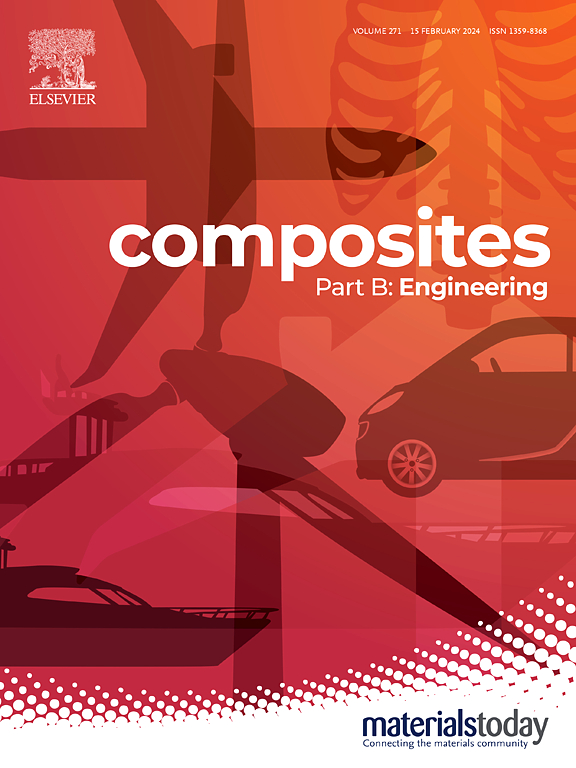Torsional fatigue damage evolution mechanism and life prediction model of 3D braided carbon fiber composites
IF 12.7
1区 材料科学
Q1 ENGINEERING, MULTIDISCIPLINARY
引用次数: 0
Abstract
3D braided carbon fiber composite shafts hold significant promise for replacing traditional metal or polymer shafts, attributed to their high specific strength and excellent damage tolerance. This study delved into the torsional fatigue damage mechanism of 3D braided carbon fiber composite shafts and developed a life prediction model. The composite shafts were fabricated using 3D four directional braiding and vacuum assisted resin molding techniques. By conducting torsional fatigue tests in conjunction with 3D DIC (3D Digital Image Correlation), CT (Computed Tomography), and in-situ damage monitoring methods, the strain and damage evolution data throughout the fatigue process were acquired. The research results show that the braided structure gives rise to a periodic grid like strain distribution, and the high strain regions are associated with the locations of the braiding nodes. The stiffness degradation occurs in three phases: stable, linear, and accelerating. The damage commences from the fiber bundles on the specimen surface and undergoes an evolution process involving matrix fiber debonding, fiber buckling, and fiber fracture. The debonding cracks within the fiber bundle are the form of damage initiation. Fiber buckling has been proven to be a sign of rapid stiffness degradation. Through the bearing and damage analysis of fiber bundles, an energy based fatigue life prediction model was successfully applied. This model incorporates the stress and strain characteristics on critical fracture surfaces involving fiber resin debonding and fiber buckling fracture as core parameters. Experimental validation confirmed the accuracy of the model in predicting fatigue life under different braiding angles and various loading conditions.
求助全文
约1分钟内获得全文
求助全文
来源期刊

Composites Part B: Engineering
工程技术-材料科学:复合
CiteScore
24.40
自引率
11.50%
发文量
784
审稿时长
21 days
期刊介绍:
Composites Part B: Engineering is a journal that publishes impactful research of high quality on composite materials. This research is supported by fundamental mechanics and materials science and engineering approaches. The targeted research can cover a wide range of length scales, ranging from nano to micro and meso, and even to the full product and structure level. The journal specifically focuses on engineering applications that involve high performance composites. These applications can range from low volume and high cost to high volume and low cost composite development.
The main goal of the journal is to provide a platform for the prompt publication of original and high quality research. The emphasis is on design, development, modeling, validation, and manufacturing of engineering details and concepts. The journal welcomes both basic research papers and proposals for review articles. Authors are encouraged to address challenges across various application areas. These areas include, but are not limited to, aerospace, automotive, and other surface transportation. The journal also covers energy-related applications, with a focus on renewable energy. Other application areas include infrastructure, off-shore and maritime projects, health care technology, and recreational products.
 求助内容:
求助内容: 应助结果提醒方式:
应助结果提醒方式:


